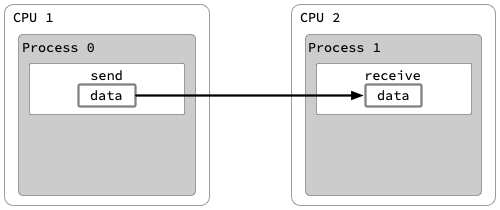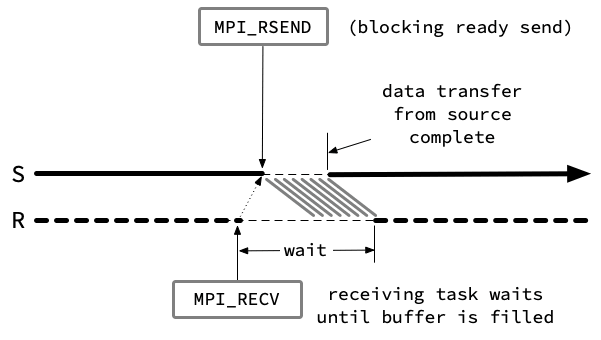Ready Send
The ready send attempts to reduce system and synchronization overhead by assuming that a ready-to-receive message has already arrived. Conceptually this results in a diagram that is identical to that first used to describe the simple view of point-to-point communication:

The idea is to have a blocking send that only blocks long enough to send the data to the network. However, if the matching receive has not already been posted when the send begins, an error will be generated.

How does this mode compare with buffered-mode communication? For the sender, it obviously reduces system overhead by eliminating the extra data copy. For the receiver, however, it may increase synchronization overhead, since in general the receive must be posted earlier than in buffered mode. Moreover, if the receive is not posted soon enough, an error will be triggered that is detected only at the receiver and not by the sender, which can make successful handling of the error difficult. Due to the risk of generating such an error, it only makes sense to use ready mode when the logic of the program dictates that the receive must be posted first, e.g., if the message is the expected response to a query that was sent previously.
CVW material development is supported by NSF OAC awards 1854828, 2321040, 2323116 (UT Austin) and 2005506 (Indiana University)